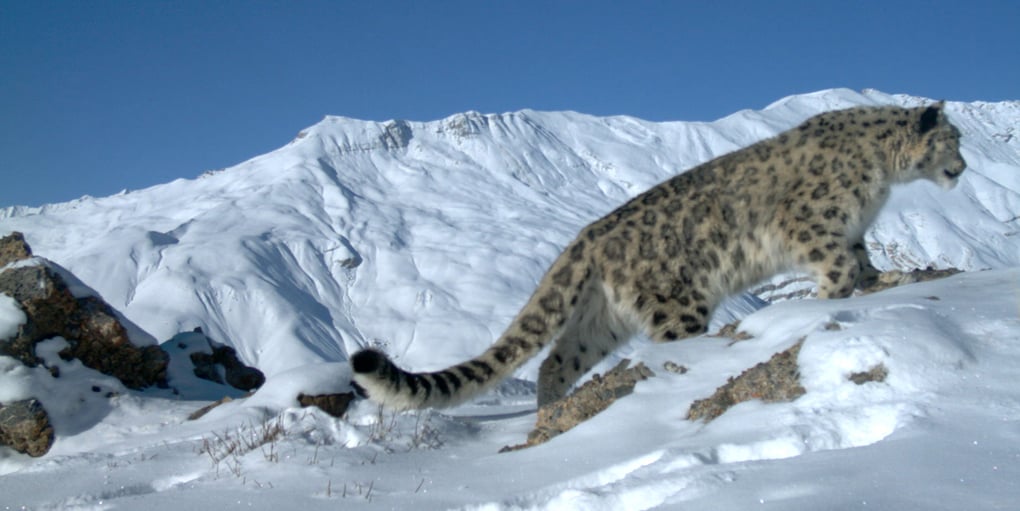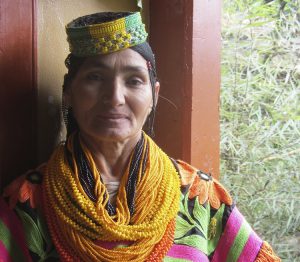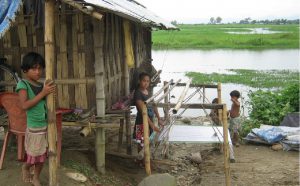Nyamgal Lobzang tightens a saddle. Living in the remote Rumbak village within the Hemis National Park in Ladakh, Lobzang’s life revolves around his donkeys. They carry provisions and tourists alike. Some donkeys are more fractious than others. But they all fear the same predator of the high mountains – the snow leopard.
Even by the standards of the high Himalayas, Rumbak is a small village, with just nine families. But as it prepares to celebrate the second-ever International Snow Leopard Day on October 23, it is a proud village, distinguished by its eco-tourism and its peaceful coexistence with this elusive big cat.
The villagers have been helped by the forest department to set up home stays as a livelihood source. This is a trade-off for the livestock killed by the snow leopard. In an area that is inhospitable to both humans and animals, the home-stay based eco-tourism is part of a slew of innovative approaches to snow leopard conservation.

It is the innovation that keeps the peace, though it was not always so peaceful. The inaccessibility of the mostly barren high-altitude landscape means people do not have many livelihood options apart from herding livestock. There are not many people, but certainly many livestock.
The snow leopard ranges from the Hindu Kush Himalayas to the Tibetan Plateau and much of high central Asia. With the global population of snow leopards down to an estimated 3,500 to 7,500, it is highly endangered. Around 500 snow leopards live in India, and their habitat in the country covers about 100,000 square kilometres of rock, ice and precious grasslands. An estimated 70% of this area is heavily grazed by migratory livestock.

Further, this fragile ecology appears to be changing: cloudbursts have increased. Just about 3 mm of extra rain can lead to flooding, landslides, mudslides and broken roads. The Intergovernmental Panel on Climate Change has said one effect of global warming is to make floods more frequent and more severe. Recent incidents in the Himalayas seem to bear that out.
And then there is the snow leopard. “All our livestock – donkeys, sheep, yak, goats – have been attacked some time or the other by snow leopards. The donkeys and mules getting attacked is the worst of all, because they carry our things. We lose our means of bringing provisions,” Lobzang says.
Killing by shock
Snow leopards can kill large numbers of livestock in a single attack. There have been cases where 50 to 60 animals, usually goat or sheep, have been found dead in one enclosure. Many of the animals break their necks due to stampedes or die of shock.
Unsurprisingly, this has led to conflict between herders and snow leopards and the predators shot. Now some efforts are being made to resolve this conflict.
When people conserve
In the cold and harsh high-altitude area stretching from Kashmir to Arunachal Pradesh in India, conservationists realised multi-faceted and inter-disciplinary approaches were required. “Landscapes that the snow leopard inhabits are full of human as well as non-human elements,” says Radhika Kothari, a conservationist who has worked in the Ladakh area. “To be able to conserve the snow leopard, we need to break the biological and social science divide.”
This means not just including people in conservation strategies but also being mindful of their aspirations, their social architecture, limitations, access and rights, she adds.
And happily, there have been breakthroughs. Nature Conservation Foundation (NCF), working with partners, has led new conservation ideas, such as community insurance and social fencing schemes. Rather than a commercial compensation scheme for a kill by a snow leopard — which some feel leads to commodification of livestock — a group insurance scheme is worked out.
Social fencing is yet another measure, meant to leave areas free for the wild animals that are preyed upon by the snow leopard. This is followed by Project Snow Leopard, launched in 2009 by the government of India.
“In the social fencing model, the villages agree to leave certain areas undisturbed for the snow leopard prey. These areas are jointly agreed on, which is why they are called social fencing,” says Yash Veer Bhatnagar, director of the Snow Leopard Trust’s India programme and senior scientist at NCF.
The traditional way to conserve wildlife by protecting an area does not work well in the high-altitude landscape. “The snow leopard habitat, unlike the tiger habitat, is still not fragmented,” says Bhatnagar. “You may have a protected area like Hemis National Park, but you will also have nearby valleys which are not protected but are excellent habitat.”
So the approach to conservation has to incorporate multiple uses of the landscape by people and animals. “We can conserve the snow leopard to perpetuity through participatory and cooperative mechanisms,” Bhatnagar says.
Eco-tourism based on home stays is a thrust area for such a conservation strategy. In Himachal Pradesh’s Spiti area, eco-tourism as part of snow leopard conservation measures has started in 12 out of 30 villages. Six villages have set up ‘social fencing’ over about 400 square kilometres.
But as solutions are worked out, new challenges come to the fore. New projects to build roads and dams mean fresh incursions in the high Himalayas. The sheer number of migrant labour impacts the local ecology. In Spiti – which has a resident population of about 10,000 – there are around 2,000 migrant labourers now. Many villagers have started hiring migrant labour to look after their livestock. Many more poaching incidents are being reported, especially of marmots. There is some suspicion – although unproven –migrants are involved in snow leopard poaching. The skin of the elusive big cat fetches a fortune in the underground market, especially in China.
International cooperation
Since these threats transcend national boundaries, the Global Snow Leopard and Ecosystem Protection Programme (GSLEP) is now bringing together governments, international and national organisations to secure 23 landscapes with viable snow leopard populations by 2020. The Hemis-Spiti landscape is one such landscape that has been earmarked in India.
Officials of Central Asian countries with snow leopard populations – Kazakhstan, Kyrgyzstan, Russia and Tajikistan – met recently to discuss how to stop poaching. “We need to coordinate scaling up of efforts to address the dynamic threats faced by snow leopards and their ecosystems,” says Koustubh Sharma, international coordinator of GSLEP.
Poaching is a big menace, but the biggest challenge is still the competition between humans and animals for natural resources. And the competition is increasing as climate change effects make themselves felt. In Rumbak, residents do not know what this will lead to, but they remain firm in their resolve to protect the snow leopard. In turn, it protects their new eco-tourism based livelihood.







